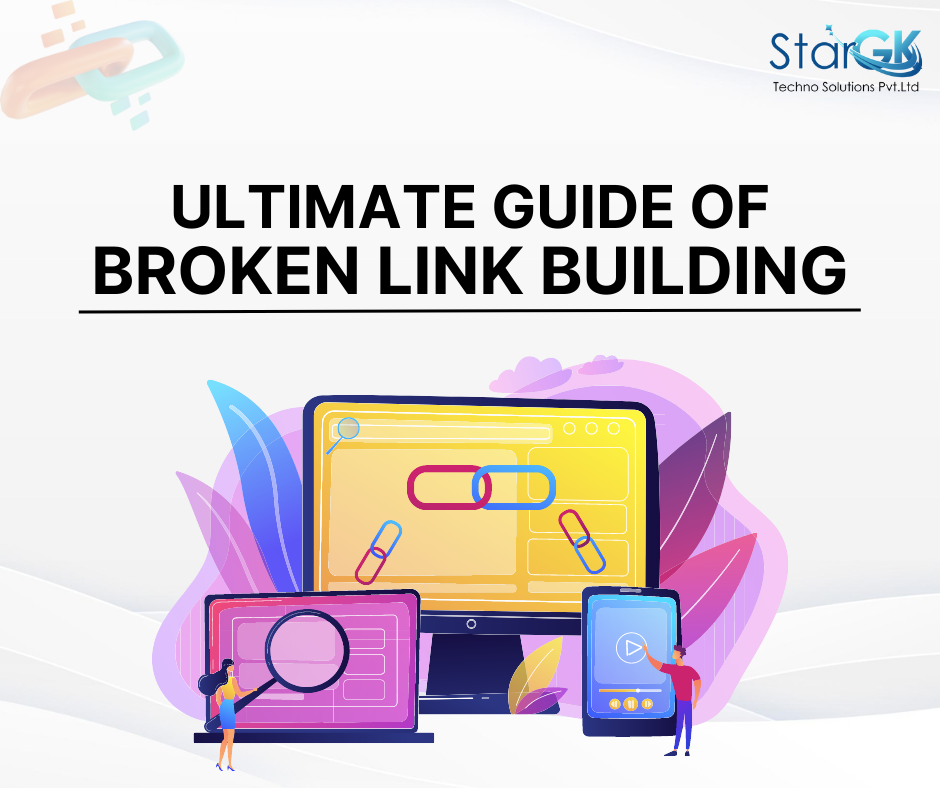
The Ultimate Guide of Broken Link Building
Broken Link Building is a link-building strategy employed in search engine optimization (SEO) to acquire backlinks to a website. It involves finding broken or dead links on other websites and reaching out to the website owners or webmasters to suggest replacing those links with links to your own website.
What is Broken Link Building
Broken link building is a link-building strategy used in search engine optimization (SEO) to acquire backlinks by identifying and replacing broken or dead links on other websites with relevant and functional links to your own website. It involves a simple process: finding broken links, creating suitable content to replace the broken links, and reaching out to the website owners to request the replacement.
Process of Broken Link Building
Finding broken links:
Using various tools or browser extensions, you can crawl the target websites to find broken links. These tools will scan the website and highlight any links that lead to non-existent pages (404 errors).
Evaluating the relevance of broken links found:
After identifying broken links, you should evaluate their relevance and determine if they are worth pursuing. Focus on links that were originally pointing to content similar to what you have on your website.
Creating suitable content:
Create high-quality content that is relevant to the broken link you found. This content should be a suitable replacement for the broken link’s target page.
Contacting website owners:
Reach out to the website owners or webmasters of the websites that have broken links, inform them about the broken link on their website and suggest your content as a replacement.
Follow Up: If you don’t receive a response initially, you can take a follow up with a gentle reminder.
How to Remove Broken Links
Identify broken links:
Use a broken link checker tool or website auditing software to scan your website and identify any broken links. These tools will provide you with a list of URLs that are returning 404 errors or other similar errors.
Review broken link reports:
Analyse the broken link reports to understand which pages or resources contain the broken links. This will help you pinpoint the specific areas that need attention.
Understand the cause:
Determine the cause of the broken links. Common causes include typos in the URL, pages or resources being moved or deleted, or external websites removing or changing their content.
Decide on the appropriate action:
Based on the cause and the importance of the broken link, decide on the appropriate action to take.Following are the options that you can take:
i) Fixing the broken link:
If the page or resource still exists but the link is incorrect, update the link URL to point to the correct location.
ii) Redirecting the broken link:
If the page or resource has been permanently moved or deleted, set up a redirect to send users to a relevant and functioning page or resource.
iii) Removing the broken link:
If the page or resource no longer exists or is no longer relevant, remove the broken link altogether.
Make the necessary changes:
Implement the chosen action by editing the HTML code or content management system (CMS) of your website. If you’re fixing or redirecting the broken link, ensure that the new URL is accurate and leads to the intended content.
Test the changes:
After making the updates, thoroughly test the affected pages or resources to ensure that the broken links have been resolved.
Update internal links: If you have internal links pointing to the pages or resources with broken links, update those links to reflect the changes you have made. This ensures a seamless user experience and prevents further broken links from occurring.
Monitor regularly:
Keep a regular check on your website to identify and address any new broken links that may arise. Set up ongoing monitoring using tools or services that periodically scan your website for broken links.
Link Building Strategy
Link building strategy is an essential component of search engine optimization (SEO) that focusses on acquiring high-quality and relevant backlinks to a website. A well-planned and executed link building strategy can improve a website’s search engine rankings, increase organic traffic, and enhance its overall online visibility. Here are key considerations and steps involved in developing an effective link building strategy:
- Define your goals
- Understand your target audience
- Research and identify link opportunities
- Develop meaningful, valuable and shareable content
- Outreach and relationship building with website owners, bloggers, influencers, and industry experts
- Guest blogging
- Broken link building
- Social media and content promotion
- Monitor and analyse results
The key to successful link building is to focus on quality over quantity. Aim for authoritative and relevant websites that can provide value to your audience. Building a strong link profile requires time, effort, and consistent monitoring. A well-executed link building strategy can significantly boost your website’s visibility and credibility in the online landscape.








Pingback: How to Get Backlinks in SEO: Step-by-Step Guide - StarGK Techno